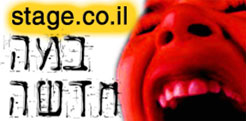










יופיו של הקרח והרפקלטיביות הגבוהה שלו יחד עם העובדה שהוא לא רץ או עף לשום
מקום הפכו אותו לאחד ממושאי הצילום המועדפים בארצות סקנדינביה.
סידרת התמונות 'קרח חם' צולמה בשעות בין הערביים או הלילה של ינואר 2004
בגטבורג, שבדרום מערב שבדייה עם מצלמת דיגיטלית אולימפוס C-4000, חצובה, תאורת
רחוב או טבעית ובגדים חמים, מאוד.
נטיפי קרח נוצרים בעקבות הבדלי הטמפרטורה בין האדמה והאוויר. כאשר המים
הזורמים בתוך האדמה שאינה קפואה מגיעים לשפת מצוק ונחשפים לאוויר הקר הם
קופאים והופכים לסידרת תמונות.
'קרח חם' עלתה לתצוגה יחיד של חודש לראשונה בסינימטק של גטבורג Hagabion עם
פתיחת פסטיבל הסרטים הבין לאומי (למעלה מ 500 סרטים) ב 23 בינואר 2004.
The beauty of the ice and its high reflectivity together with the fact that
it does not run or fly anywhere made it the object of choice for
photographers in the Nordic countries.
The 'Warm Ice' series was taken during twilight or night at January 2004 in
Gothenburg, south Sweden, using street or natural light, tripod, digital
camera Olympus C-4000 and warm clothes.
Ice stalactites are formed due to the temperature difference between the
ground and the air. When the streaming water in the ground reaches a cliff,
it is exposed to the cold air, freezes and becomes a photo series.
'Warm Ice' was first presented in a single photo exhibition of one month at
Gothenburg's cinemateque, Hagabion, during the international film festival
(more than 500 films) started at the 23rd of January 2004.











